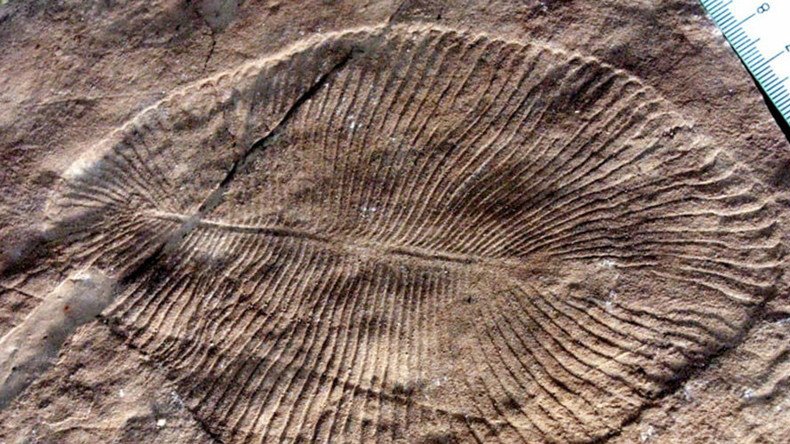Weird ribbed sea fossil predating dinosaurs finally classed as ‘animal’

An extinct sea dwelling-blob identified only by its ancient fossil markings can definitely be described as an ‘animal,’ according to scientists. The researchers also say the creature’s growth process has been characterized all wrong for decades.
The ‘Dickinsonia’ lived underwater long before dinosaurs existed more than 550 million years ago.
One of the first-known relics of a Dickinsonia was found in 1946 by geologist Reginald Sprigg in the Flinders Ranges, South Australia. The discovery proved that organisms without hard bodied shells or skeletal structures could leave fossilized prints.
READ MORE: Iconic viking warrior was a woman, DNA test confirms
Fossils of the creature reveal it was oval in shape with a ribbed body divided into a series of segments. However, without much physical evidence to hand, debate continued over whether the soft-bodied organism was a type of fungus, a plant or an early Ediacaran period creature.
A jellyfish? A worm? A fungus? Was the 'mysterious' Dickinsonia an animal, or was it something else? https://t.co/FdhpP6rzyApic.twitter.com/YXok1MIdtt
— Oxford University (@UniofOxford) September 16, 2017
Now a study of the Dickinsonia’s body plan produced by scientists from Oxford, Cambridge and Bristol universities states non-animal categories for the strange creature have been ruled out.
Dr Renee Hoekzema, leader author of the study, which also analyzed the evolutionary pattern of the animal, explained the difficulty in categorizing the unusual species.
“They are mysterious because despite there being around 200 different species, very few of them resemble any living or extinct organism, and therefore what they were, and how they relate to modern organisms, has been a long-standing paleontological mystery,” she said.
By confirming growth from either ends of the Dickinsonia, researchers surmised that people may have been viewing the animal’s body incorrectly.
“We were able to confirm that Dickinsonia grows by both adding and inflating discrete units to its body along its central axis. But we also recognised that there is a switch in the rate of unit addition versus inflation at a certain point in its life cycle,” Dr Hoekzema said.
“All previous studies have assumed that it grew from the end where each ‘unit’ is smallest, and therefore considered to be the youngest. We tested this… eventually coming to the conclusion that people have been interpreting Dickinsonia as having grown at the wrong end for the past 70 years,” she added.













